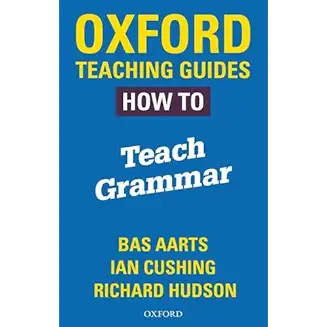Teaching grammar in context
Pedagogical principles and a rationale for contextualised grammar teaching
Teaching grammar in context is a method and approach for teaching grammar. Below is our rationale and guiding set of principles for teaching grammar in this way. You can find out more about this method on our CPD course for teachers.
'In context' means that the teaching of grammar is embedded and integrated into other aspects of the curriculum, such as creative writing and analytical reading, rather than a standalone activity.
Why?
- A contextualised grammar pedagogy is a more unified approach, which integrates aspects of language and literature, rather than seeing them as two distinct 'parts' of English. It therefore draws on the disciplines of stylistics or literary linguistics
- It relates 'effects' (i.e. a reader's feelings and responses) to 'structures' (i.e. the grammatical patterns of a text). It is not just an exercise in 'feature spotting', whereby grammatical features of a text are identified without any exploration of what the significance of their presence is.
- If students know more about the grammatical structures of a text then this empower them to conduct systematic and rigorous interpretations of a text, moving away from the kind of vague, impressionistic and superficial analyses which characterises much of 'traditional' literary criticism.
- National Curriculum content (at least in the UK) requires students to learn and know about grammar and how it works as a meaning-making resource.
- There is an increasing body of research showing that contextualised grammar teaching can have a positive impact on creative writing (see here, for example) and analytical reading (see here, for example).
What?
- A contextualised grammar pedagogy construes grammar as a series of consciously chosen meaning-making patterns, not an arbitrary list of rules and constraints.
- It foregrounds the idea that grammar is about choice; that writers (and speakers) make conscious choices about the linguistic patterns they use.
- Teaching grammar in context involves making connections between grammatical patterns and the meaning of texts; wider contextual aspects such as genre, audience, subject and purpose; a reader's feelings and responses to a text; potential authorial motivations for making decisions about language choices.
- It avoids both 'feature spotting' and 'formulaic' grammar teaching, i.e. the falsehood that ‘descriptive writing is full of adjectives’ and ‘verbs are doing words', for example.
How?
- A contextualised grammar pedagogy leads with concepts and ideas, rather than the grammar itself. For example, a teaching activity might begin with students discussing their feelings and responses to a text, and then going back to the text to explore why the grammatical patterns made them feel and think the way they did.
- Reader's responses must hold the text to account: i.e. they must be able to explore the grammatical patterns of a text and use those patterns to help explain their responses.
- The use of metalanguage (grammatical terminology) is important because it provides a common, shared language which allows students (and teachers) to be more accurate, precise and efficient with the way they talk about language itself.
You can find more about a contextualised approach to grammar teaching in the following book: How to Teach Grammar (by Bas Aarts, Ian Cushing and Dick Hudson).

»
- Printer-friendly version
- Log in to view or leave comments


